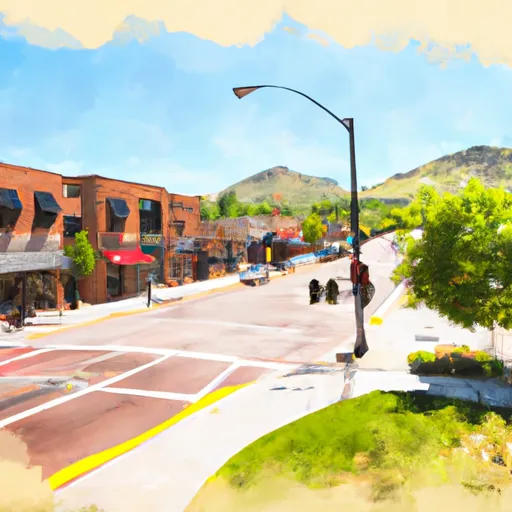-
 Snoflo Premium
Snoflo Premium
Get unlimited access to all our content
With no Ad interruptions! - Start Your Free Trial Login with existing account
Boulder
Eden Index
Climate
8.7
•
Recreation
3.4
•
Community
•
Safeguard
4.6/10

Nestled in the heart of the Grand Staircase-Escalante National Monument, Boulder, Utah is a small town with a big outdoor recreation scene. The climate is typical of Utah's high desert, with hot summers and cold winters. Boulder sits at the mouth of the Escalante River, which is known for its vibrant blue-green water and fantastic fly fishing opportunities. The area is also home to many slot canyons, including the famous Peek-a-Boo and Spooky Gulch. Hiking, backpacking, and climbing are all popular activities in the surrounding wilderness areas. The town has a few local restaurants and accommodations, but visitors should come prepared for a rustic, off-the-beaten-path experience.
What is the Eden Index?
The Snoflo Eden Index serves as a comprehensive rating system for regions, evaluating their desirability through a holistic assessment of climate health, outdoor recreation opportunities, and natural disaster risk, acknowledging the profound impact of these factors on livability and well-being.
Climate Health Indicator (CHI): 8.7
Boulder receives approximately
270mm of rain per year,
with humidity levels near 60%
and air temperatures averaging around
10°C.
Boulder has a plant hardyness factor of
7, meaning
plants and agriculture in this region tend to thrive during the non-winter months.
By considering the ideal temperature range, reliable water supplies, clean air, and stable seasonal rain or snowpacks, the Climate Health Indicator (CHI) underscores the significance of a healthy climate as the foundation for quality living.
A healthy climate is paramount for ensuring a high quality of life and livability in a region, fostering both physical well-being and environmental harmony. This can be characterized by ideal temperatures, reliable access to water supplies, clean air, and consistent seasonal rain or snowpacks.
Weather Forecast
Streamflow Conditions
Upper Colorado-Dirty Devil
Area Rivers
Upper Colorado-Dirty Devil
Snowpack Depths
Upper Colorado-Dirty Devil
Reservoir Storage Capacity
Upper Colorado-Dirty Devil
Groundwater Levels
Recreational Opportunity Index (ROI): 3.4
The Recreational Opportunity Index (ROI) recognizes the value of outdoor recreational options, such as parks, hiking trails, camping sites, and fishing spots, while acknowledging that climate plays a pivotal role in ensuring the comfort and consistency of these experiences.
Access to outdoor recreational opportunities, encompassing activities such as parks, hiking, camping, and fishing, is crucial for overall well-being, and the climate plays a pivotal role in enabling and enhancing these experiences, ensuring that individuals can engage in nature-based activities comfortably and consistently.
Camping Areas
| Campground | Campsites | Reservations | Toilets | Showers | Elevation |
|---|---|---|---|---|---|
| Lower Bowns | 4 | 7,419 ft | |||
| Mix Pad Dispersed | None | 4,643 ft | |||
| Swing Arm City OHV Dispersed | None | 4,498 ft | |||
| Cedar Mesa - Capitol Reef National Park | 5 | 5,610 ft | |||
| Horse Canyon - Grand Staircase Nat Mon | None | 5,943 ft | |||
| Fruita - Capitol Reef National Park | 71 | 5,438 ft | |||
| Coal Mine Wash Dispersed | None | 4,643 ft |
Nearby Ski Areas
Catastrophe Safeguard Index (CSI):
The Catastrophe Safeguard Index (CSI) recognizes that natural disaster risk, encompassing floods, fires, hurricanes, and tornadoes, can drastically affect safety and the overall appeal of an area.
The level of natural disaster risk in a region significantly affects safety and the overall livability, with climate change amplifying these risks by potentially increasing the frequency and intensity of events like floods, fires, hurricanes, and tornadoes, thereby posing substantial challenges to community resilience and well-being.
Community Resilience Indicator (CRI):
The Community Resilience Indicator (CRI) recognizes that education, healthcare, and socioeconomics are crucial to the well-being of a region. The CRI acknowledges the profound impact of these elements on residents' overall quality of life. By evaluating educational resources, healthcare accessibility, and economic inclusivity, the index captures the essential aspects that contribute to a thriving community, fostering resident satisfaction, equity, and social cohesion.

